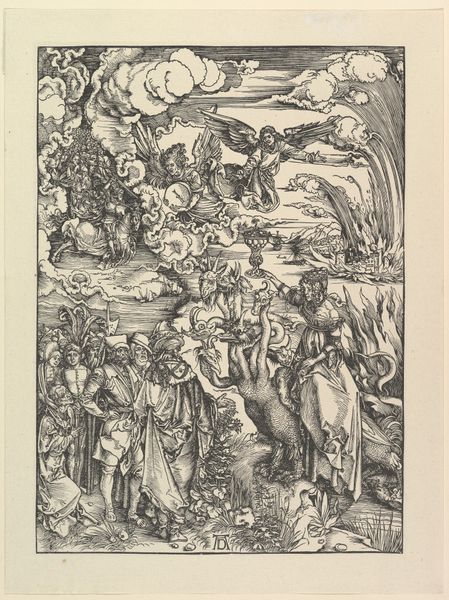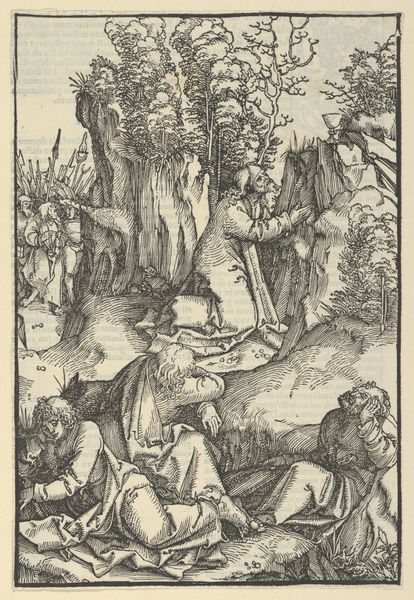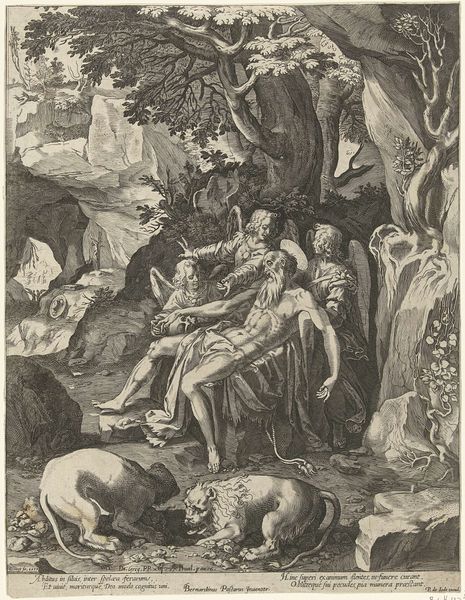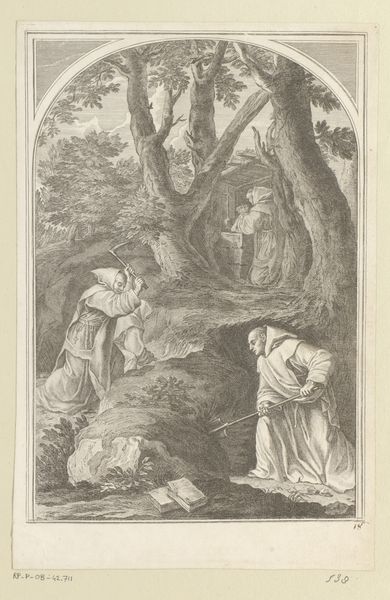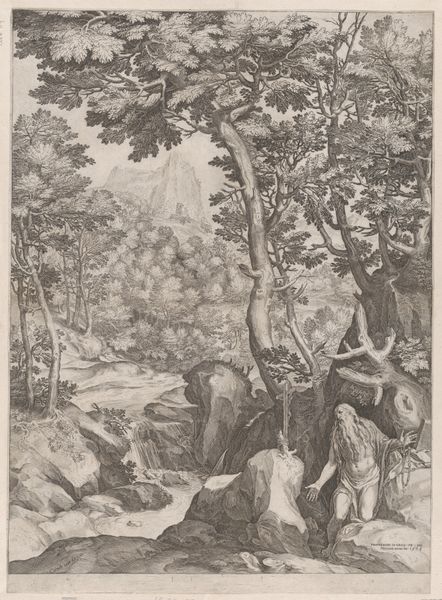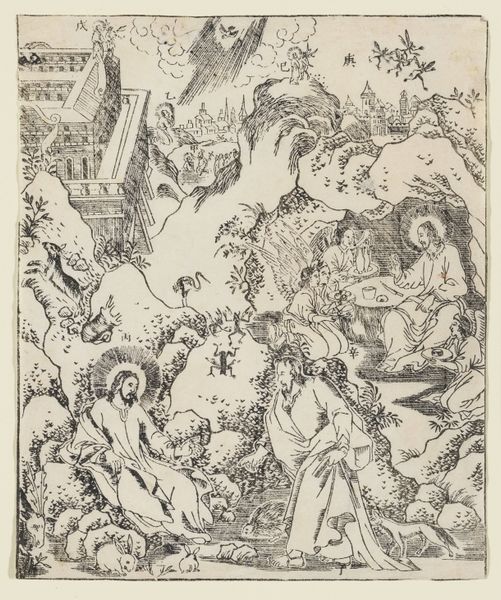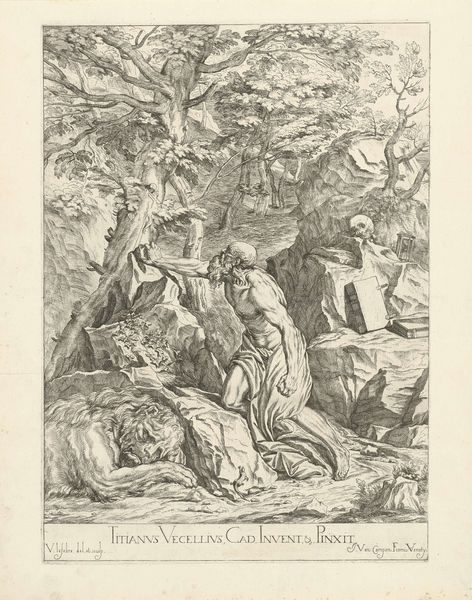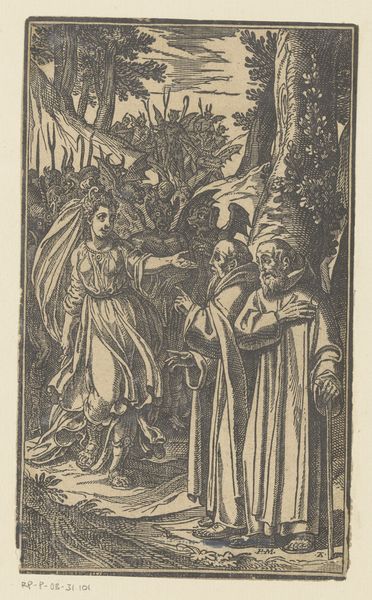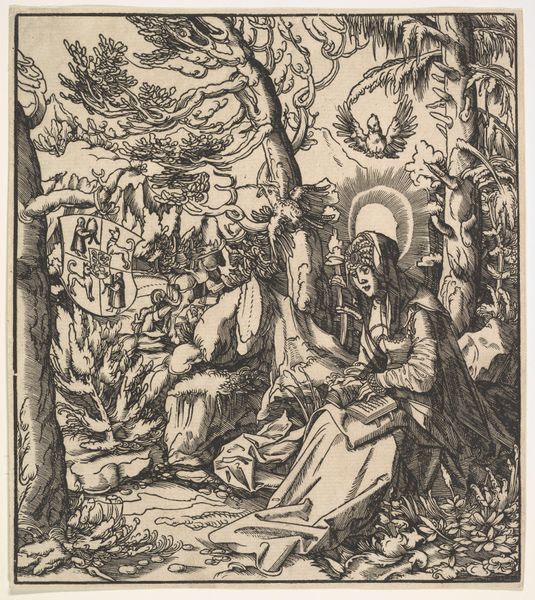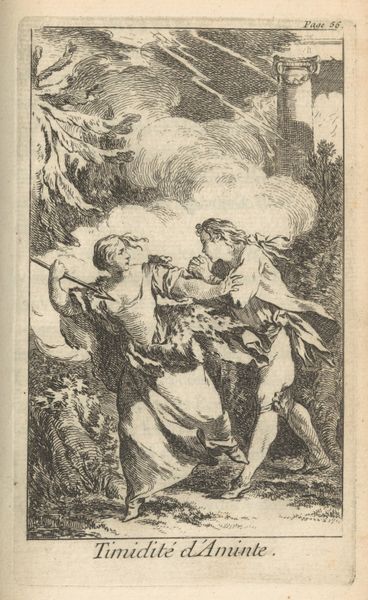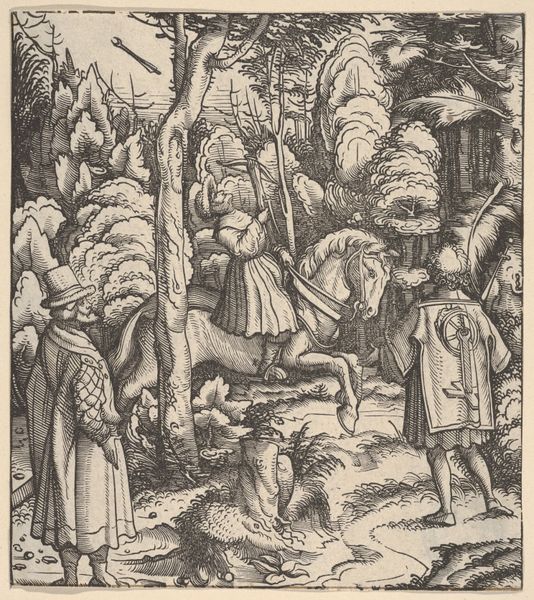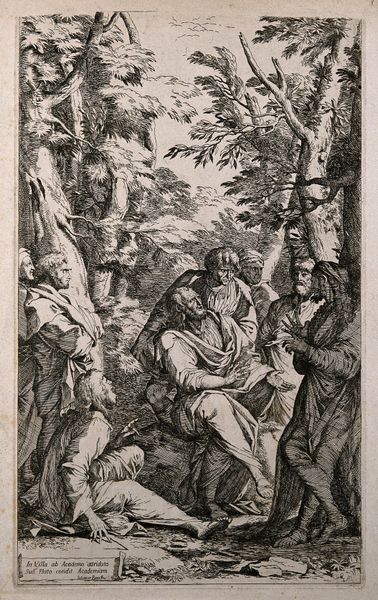
The New Metamorphosis, Plate 7: The Cardinal, a Hermit and Donna Angela Holding Fantasio 1723 - 1724
0:00
0:00
drawing, print, ink, engraving
#
pen and ink
#
drawing
#
ink drawing
#
pen drawing
# print
#
landscape
#
figuration
#
ink
#
history-painting
#
engraving
Dimensions: sheet: 5 1/2 x 3 in. (14 x 7.6 cm)
Copyright: Public Domain
Curator: William Hogarth's "The New Metamorphosis, Plate 7: The Cardinal, a Hermit and Donna Angela Holding Fantasio" dates from around 1723-1724. The piece, an engraving, is currently part of the Metropolitan Museum of Art's collection. Editor: My first impression is that of a darkly comic tableau. There's a kind of absurd juxtaposition of figures set within an almost gothic, heavily wooded landscape. Curator: Absolutely. Let's look at the technique. Hogarth employed precise pen and ink work here, then the printmaking. This facilitated the relatively widespread distribution of such satirical imagery. This connects to questions of authorship. Did Hogarth make the initial marks, and who aided in production? The distribution and the social reception of his work interests me as much as the images. Editor: I see a blend of the sacred and profane within that composition. We've got the religious symbolism, like the cross atop the hill, mixed with earthly figures like the Cardinal, Hermit and Donna Angela, which lends it to an air of mockery, perhaps against the Church itself? Is the "Fantasio" they're holding supposed to represent an idealized desire? Curator: It’s plausible. Hogarth clearly depicts the class hierarchies with the materials used: printed for mass consumption but alluding to stories known to the elite. He is both capitalizing on and critiquing societal structures, which becomes so relevant considering his own origins. Editor: Looking closely, the contrast of light and shadow amplifies the dramatic feeling. The woods almost become a moral maze. Are we supposed to feel pity for this hermit or find humor in his austere life and garb? Curator: That’s Hogarth's genius. He doesn't offer easy answers. Consider the state of the printing trade during that period; consider the social changes... such contexts allows us to interpret the artwork. Editor: Indeed, by paying close attention to the interplay of symbols, emotional intensity, and the cultural landscape that fostered this piece, we find that art functions as cultural carrier. Curator: Well said, it is in analyzing the raw materials alongside the artistic choices of people like Hogarth that we truly engage in understanding art.
Comments
No comments
Be the first to comment and join the conversation on the ultimate creative platform.
